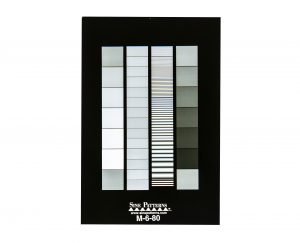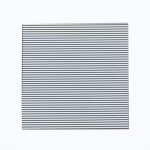A principal method of 3D imaging, structured light offers many applications from augmented reality to real-time medical imaging. There are a number of imaging techniques used for structured light. Similarly, sinusoidal arrays have a large number of applications, many of which have been underutilized. As structured light continues to be a growing and emerging method of 3D imaging, we highlighted 5 reasons why using Sine patterns for structured light can yield better imaging results when compared to other techniques.
- Highest resolution method: A sine target offers a continuously varying light pattern at known frequency, which allows for pixel level resolution.
- Simplicity: The use of pure sine waves simplifies mathematics involved in resolving phase information.
- Method primarily based on phase shifting: Light intensity is therefore not a major factor, and the pattern is insensitive to dramatic changes in surface texture and reflectance. This is very important because most real world subjects will feature some sort of irregular surface texture and/or reflection variation.
- Less noise: Phase information can be obtained through Fourier transforms which are exceedingly good at rejecting noise when measuring pure sines.
- APPLIED IMAGE can produce cost effective sines. Finally, specific to our process, APPLIED IMAGE’s sines can be used as an analog light source and filter based projected light pattern which can be more cost effective than a digital pattern generator based on DLP chips.
Sinusoidal targets can improve your structured light processes and applications by helping to eliminate surface inconsistencies, providing better resolution, and simplifying the process overall. How can sines help your structured light application? How could they improve your other optical systems?


